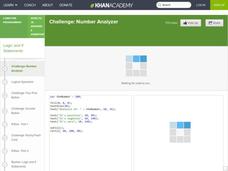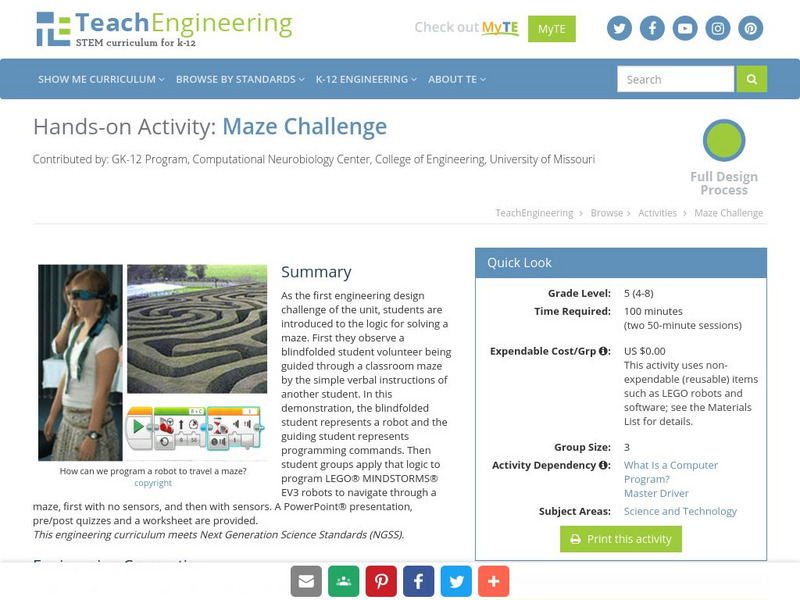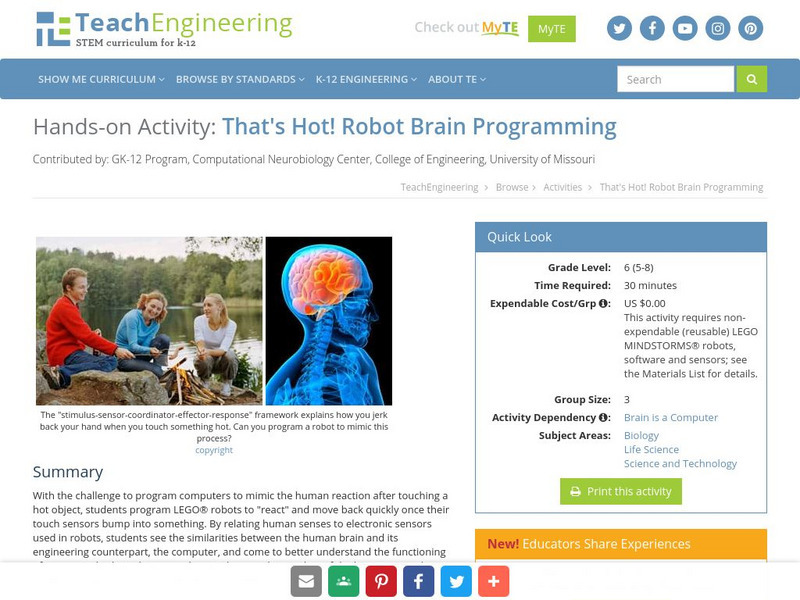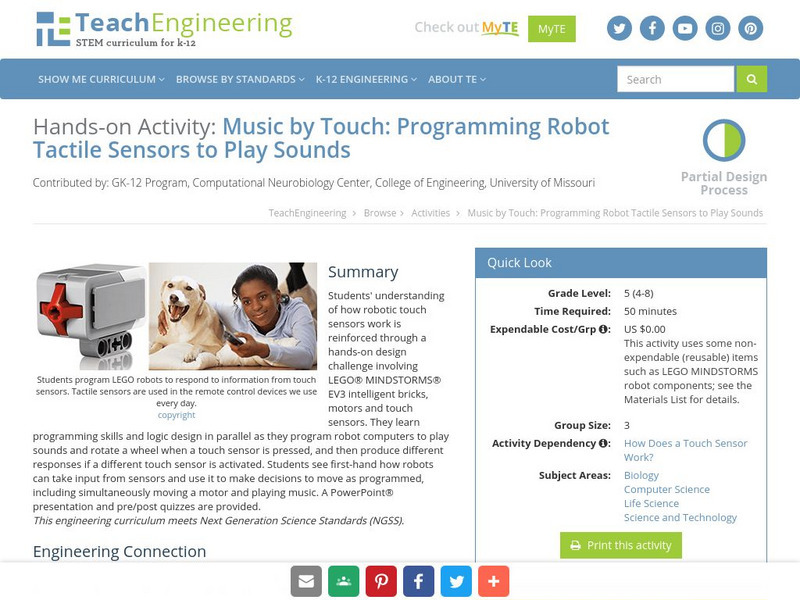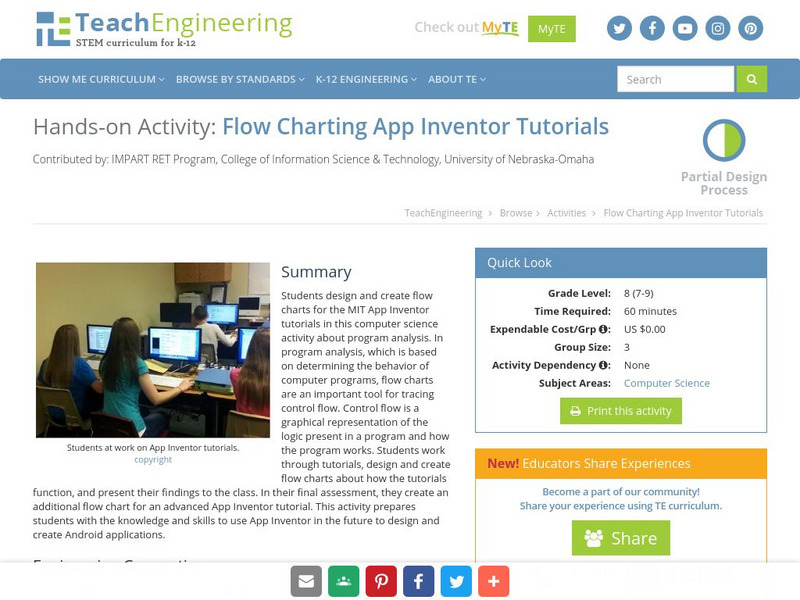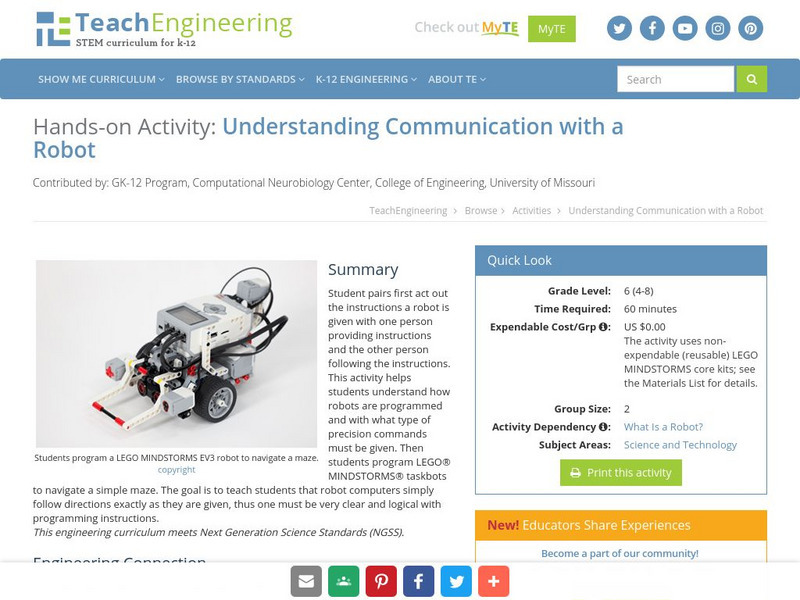Khan Academy
Challenge: Number Analyzer
The JavaScript program you create will answer a simple question about a number. Is it positive, negative, or zero? Create a Boolean expression and use conditional if statements to test the value and then print the...
Khan Academy
Challenge: Your First Button
Practice using conditional if statements, Boolean expressions, and Boolean operators by programming a user-selected button. This activity guides by using a small program that needs some modifications to work correctly.
Khan Academy
Challenge: Bouncy Ball
Create your own bouncing ball program with this guided activity. Java Script code that sends a ball down the screen is provided. The task is to fix the code to make it bounce up when it hits the bottom of the screen and then down again...
Khan Academy
Challenge: Smarter Button
Now, challenge your knowledge of Boolean operators even further with this JavaScript program to create a button that changes color after being pressed. This activity is the second in a series and would made a good follow up to the first...
Khan Academy
Challenge: Your First Painting App
Ever wonder how those neat painting applications work? Completing this coding activity will give you some insight. First, starting with a simple function that draws a small circle as the mouse moves around the screen, adjust the function...
Khan Academy
Project: Magic 8-Ball
Your student programmers will enjoy creating their own Magic 8-ball in this JavaScript activity. This a great opportunity to practice using if and else statements based on randomly generated numbers. What will you ask the 8-ball?
Khan Academy
Challenge: Flashy Flash Card
Create your own flash card in this JavaScript coding activity. Modify the given code so that the answer is revealed when the mouse is pressed. Provides good practice of conditional if-else statements.
Beauty and Joy of Computing
Unsolvable and Undecidable Problems
Try as you might, some functions just cannot be computed. The lab introduces the class to the possibility of unsolvable problems. The fourth lesson in a series of seven begins with a logic problem, then progresses to looking at functions...
Computer Science Unplugged
Treasure Hunt—Finite-State Automata
Introduce your class to the concept of finite-state automata with an activity that asks individuals to try to map their way to Treasure Island by taking different routes though an island chain. Each island has two ship sailing...
Curated OER
Periodic Table of Fun
Are you looking to put the fun back in the fundamentals of chemistry? Why not have groups create their own periodic tables of something (animals, food, music groups, etc.) practicing the organizational strategies used in the periodic...
TeachEngineering
Teach Engineering: Maze Challenge
As the first engineering design challenge of the unit, students are introduced to the logic for solving a maze. student groups apply that logic to program LEGO MINDSTORMS NXT robots to navigate through a maze, first with no sensors, and...
TeachEngineering
Teach Engineering: Line Follower Challenge
Student groups are challenged to program robots with light sensors to follow a black line. Learning both the logic and skills behind programming robots for this challenge helps students improve their understanding of how robots work, and...
TeachEngineering
Teach Engineering: That's Hot! Robot Brain Programming
With the challenge to program computers to mimic the human reaction after touching a hot object, students program LEGO robots to "react" and move back quickly once their touch sensors bump into something. By relating human senses to...
TeachEngineering
Teach Engineering: Music by Touch
Through a hands-on design challenge involving LEGO MINDSTORMS NXT robots, students learn programming skills and logic design as they program robot computers to play sounds and rotate a wheel when a touch sensor is pressed, and then...
TeachEngineering
Teach Engineering: Using Waits, Loops and Switches
Students incorporate their knowledge of wait blocks, loops, and switches into their programming of the LEGO MINDSTORMS NXT robots to perform different tasks depending on input from a sound sensor and two touch sensors. This activity...
TeachEngineering
Teach Engineering: Python Script Analysis
Working in small groups, students complete and run functioning Python codes.This requires students to understand the logic employed, and then they must make modifications to the code in order to find the slopes of tangents to a variety...
Other
Motif Plays Backgammon: A Game of Strategy
A very challenging game of strategy and skill from Backgammon Galore. The student plays backgammon against a computer program. Included is a page on instructions so the student can learn the game.
TeachEngineering
Teach Engineering: Flow Charting App Inventor Tutorials
Students design and create flow charts for the MIT App Inventor tutorials in this computer science activity about program analysis. In program analysis, which is based on determining the behavior of computer programs, flow charts are an...
TeachEngineering
Teach Engineering: Understanding Communication With a Robot
Student pairs first act out the instructions a robot is given with one person providing instructions and the other person following the instructions. This activity helps students understand how a robot is programmed and with what type of...
